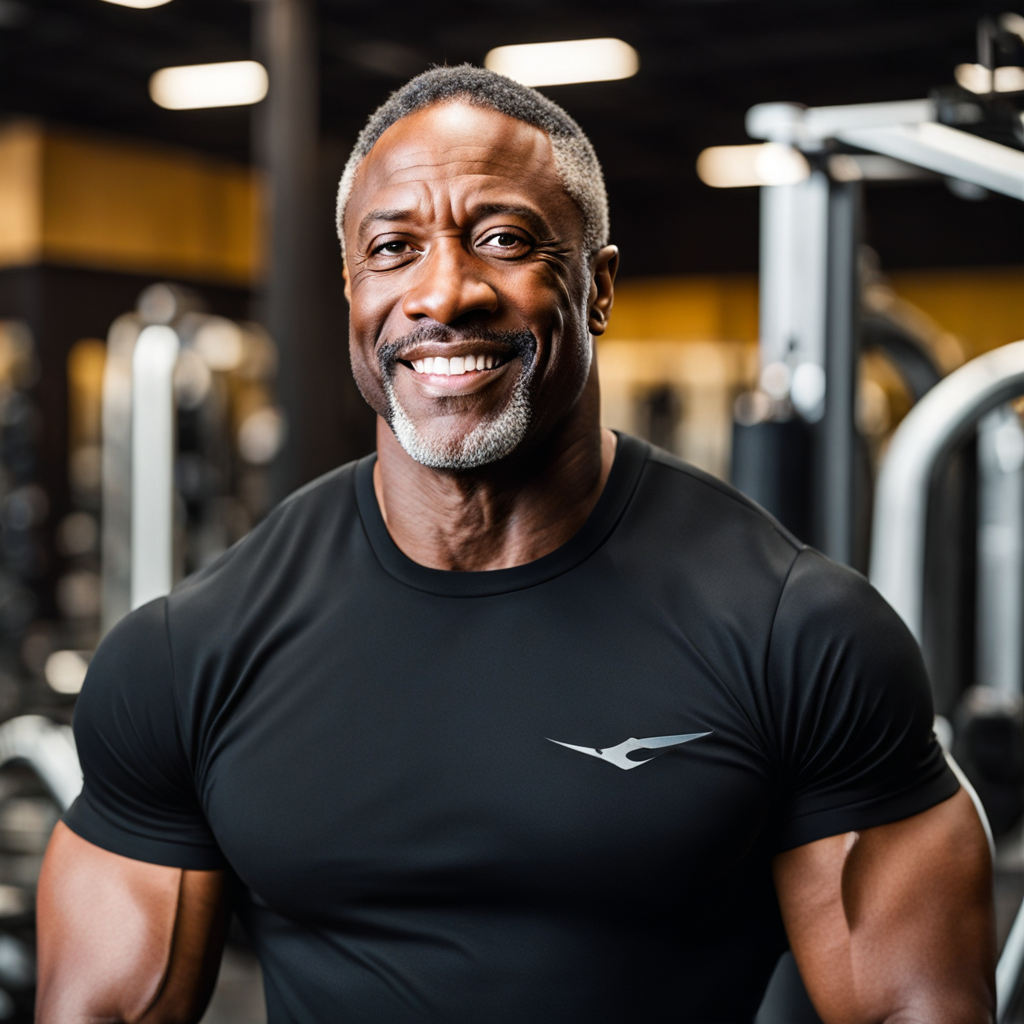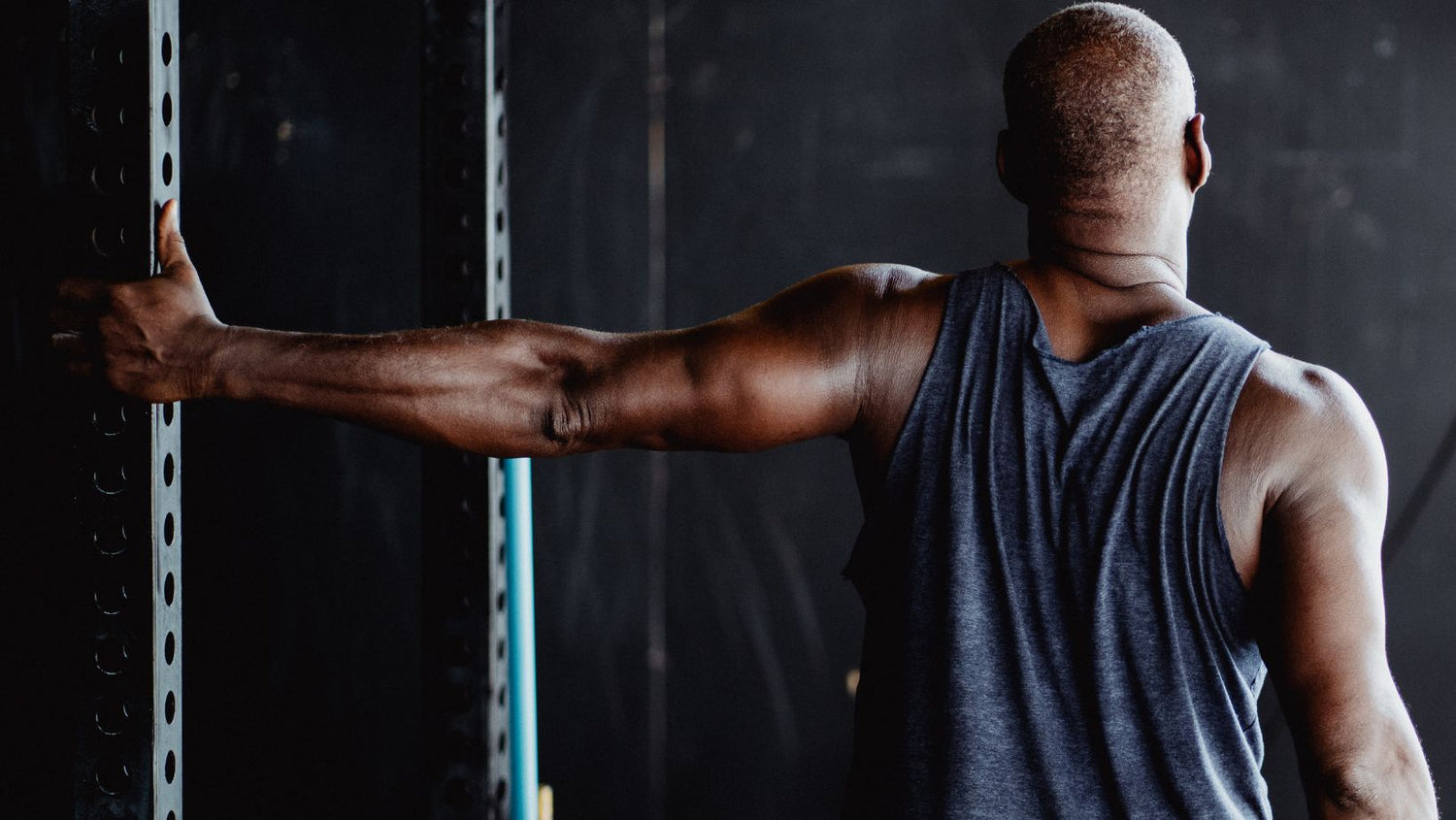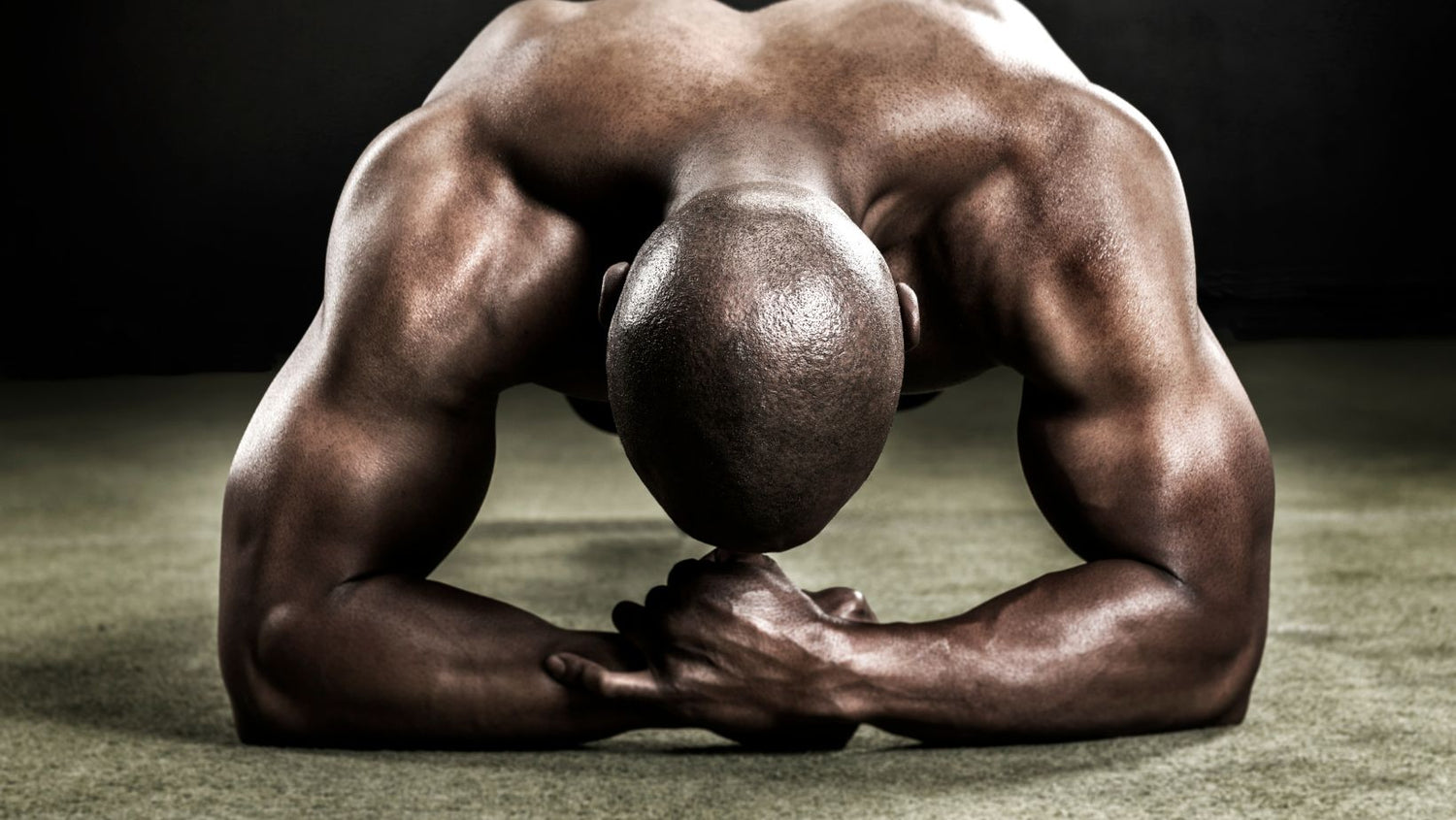If you're looking to develop more robust arms, barbell curls are a great option. They have long been recognized as one of the exercises for targeting the biceps, the muscles at the front of your upper arms.
However it's worth noting that barbell curls offer more than benefits. They also contribute to your health and performance by improving grip strength, reducing the risk of injuries, increasing upper body mass and optimizing training efficiency.
In this article I will provide you with guidance on performing curls and maximizing their effectiveness. We'll explore the advantages they offer, which muscles they target, who would benefit from including them in their routine and how to incorporate them into your workout program. On top of that I'll share some insights and tips that have helped me enhance my technique and achieve better results with barbell curls.
By the time you finish reading this article you'll have a manual on how to perform curls for achieving bigger and stronger arms. Let's dive in!
The Benefits of Barbell Curls
Barbell curls can benefit your fitness and health in various ways. Here are some of the main benefits of barbell curls:
1. Improved Grip Strength
The barbell curl is an exercise that can be beneficial, for enhancing your grip and arm strength which in turn can have an impact on your performance in other exercises and sports. When you perform a barbell curl with an amount of weight it requires you to exert a grip in order to prevent the barbell from slipping or rotating in your hands. This action. Activates all the muscles in your forearms and hands that're responsible for gripping and holding objects.
Having grip strength is crucial for activities that involve pulling movements, such as deadlifts, rows, pull ups or even climbing. It can also assist you in avoiding accidents, like dropping weights or losing control of them while lifting. Moreover developing grip strength can contribute to improving hand eye coordination and dexterity.
2. Injury Prevention
The biceps play a role in bending the elbow and providing support for gripping objects and maintaining shoulder stability. They are involved in activities like carrying groceries, opening doors or throwing a ball that require pulling or lifting.
However the biceps can be susceptible to injuries especially if they are weak or overused. Common biceps injuries include tendinitis, strains, tears or bursitis. These injuries can lead to pain, inflammation, swelling or limited range of motion in your elbow or shoulder.
To prevent these injuries and enhance the strength and endurance of your biceps you can incorporate barbell curls into your workout routine. By performing curls with technique and form you can minimize excessive strain on your elbow and shoulder joints. This exercise also helps in balancing the muscles of your arms by targeting both the short head of the biceps.
3. Increased Upper Body Mass
The barbell curl is an exercise for building muscle in your body specifically targeting your biceps and deltoids. The biceps consist of two heads; the head and the short head. The long head helps create a bicep peak while the short head contributes to thickness.
Performing barbell curls effectively engages both heads of the biceps leading to shapely arms. Additionally this exercise also works the shoulder muscles ( deltoid) as a secondary muscle group resulting in increased shoulder size and definition.
By increasing muscle mass, in your body not can you enhance your physical appearance but also boost self confidence. Furthermore, having muscle can elevate your resting metabolism rate and facilitate calorie burning at rest.
4. Enhanced Training Efficiency
The barbell curl is an effective exercise that can boost your training efficiency by combining two movements in one; bending your elbows and flexing your shoulders. This means that you can engage muscles in time, and with minimal equipment.
Moreover the barbell curl is user friendly and adjustable. You have the flexibility to use a barbell along with plates or clips to adjust the weight according to your goals and abilities. Additionally you can experiment with grip widths, tempos or ranges of motion to specifically target parts of your biceps or challenge yourself further.
Furthermore the barbell curl offers versatility and adaptability. You have the option to perform it as an exercise or incorporate it into a circuit or superset routine. Whether you choose to do it at home or at the gym as a warm up or a finisher for strength development or muscle hypertrophy – the choice is yours!
The Muscles That Barbell Curls Work

Performing barbell curls targets the following muscles:
- Primary muscles: Barbell curl is an isolation exercise that primarily targets the biceps brachii — long and short head.
- Secondary muscles: Brachialis and brachioradialis are the stabilizer muscles that operate in synergy with the biceps brachii to flex the forearm at the elbow. They also add thickness and size to the arms.
- Tertiary muscles: Anterior deltoid is the front part of the shoulder muscle that assists in shoulder flexion and abduction. It also helps to stabilize the shoulder joint during the curl.
Who Should Do Barbell Curls
Barbell curls are suitable for anyone who wants to improve their arm strength, size, and shape. They are especially beneficial for:
- Bodybuilders and fitness enthusiasts who want to build bigger and more defined biceps and shoulders.
- Athletes and sports people who need to enhance their grip strength and pulling power, such as climbers, wrestlers, or martial artists.
- People who have weak or injured biceps and need to strengthen them or prevent further damage, such as those who suffer from elbow tendinitis or bursitis.
- People who have muscle imbalances or asymmetries in their arms and need to correct them or improve their proportion.
Barbell Curl Set, Rep, and Weight Recommendations
The number of sets, reps, and weight you should use for barbell curls depends on your goals and abilities. Here are some general guidelines:
- For strength: Do 3 to 5 sets of 4 to 6 reps with a heavy weight that challenges you but allows you to maintain good form. Rest for 2 to 3 minutes between sets.
- For hypertrophy: Do 3 to 4 sets of 8 to 12 reps with a moderate weight that fatigues you but allows you to complete all the reps. Rest for 60 to 90 seconds between sets.
- For endurance: Do 2 to 3 sets of 15 to 20 reps with a light weight that burns your muscles but allows you to keep going. Rest for 30 to 45 seconds between sets.
You can also adjust the number of sets, reps, and weight according to your experience level. If you are a beginner, start with lower numbers and gradually increase them as you get stronger and more confident. If you are an intermediate or advanced lifter, you can experiment with higher numbers and different intensities.
Barbell Curl Variations
There are many ways to modify or spice up your barbell curls to target different parts of your biceps, increase the difficulty, or add some variety. Here are some of the most common barbell curl variations:
1. Reverse Grip Barbell Curl
If you want to switch things up you can try using a grip when doing curls. If you have your palms facing up try having them facing down. This change in grip will shift the focus from your biceps brachii to your brachioradialis and brachialis muscles, which are often neglected during curls.
To do this variation grab a barbell, with your palms facing at shoulder width. Curl the barbell upwards while keeping your palms facing. Lower the barbell slowly. Repeat.
This variation has its benefits as it targets and strengthens your brachioradialis and brachialis muscles, which can help improve forearm strength and thickness.
2. Wide Grip Barbell Curl
This variation involves using a wider than shoulder-width grip on the barbell. This increases the range of motion and stretches the long head of the biceps more.
To do it, grab a barbell with a supinated grip at a wide distance. Curl the bar up as usual, but keep your elbows close to your sides. Lower the bar slowly and repeat.
Benefits: Emphasizes the long head of the biceps, which can improve your bicep peak and shape.
3. Close Grip Barbell Curl
This variation involves using a narrower than shoulder-width grip on the barbell. This decreases the range of motion and targets the short head of the biceps more.
To do it, grab a barbell with a supinated grip at a close distance. Curl the bar up as usual, but keep your elbows close to your sides. Lower the bar slowly and repeat.
Benefits: Emphasizes the short head of the biceps, which can improve your bicep thickness and width.
4. Cheat Barbell Curl
This variation involves using a heavier weight than you can normally curl with strict form, and using a slight momentum or body swing to help you lift the bar. This allows you to overload your biceps and recruit more muscle fibers.
To do it, grab a barbell with a supinated grip at shoulder width. Curl the bar up as usual, but use a slight hip thrust or back arch to initiate the movement. Keep the momentum to a minimum and control the bar as much as possible. Lower the bar slowly and repeat.
Benefits: Allows you to use more weight and stimulate more muscle growth. Can also improve your strength and power.
Barbell Curl Alternatives
If you don’t have access to a barbell or want to try something different, you can also do other exercises that work your biceps similarly to barbell curls. Here are some of the most common barbell curl alternatives:
1. Dumbbell Curl
Here's a rewritten version that appears human like;
of using a barbell you can try using dumbbells as an alternative. This way you'll have the advantage of working on each arm which can help address any imbalances or differences between them. Additionally using dumbbells gives you flexibility to rotate your wrists and adjust the angle of your elbows.
To perform this exercise simply grab a pair of dumbbells with your palms facing up in a grip. Curl the dumbbells up as you would make sure to maintain the palm up position throughout. You can choose to curl both arms or alternate between them for focus. Slowly lower the dumbbells. Repeat the movement.
This exercise offers benefits, including arm balance and coordination. It also allows you to make adjustments to your wrist and elbow positions as needed.
2. Cable Curl
This alternative involves using a cable machine instead of a barbell. This provides constant tension on your biceps throughout the entire range of motion, which can increase the muscle pump and burn.
To do it, attach a straight or curved bar to a low pulley on a cable machine. Grab the bar with a supinated grip at shoulder width. Curl the bar up as usual, but keep your elbows close to your sides. Lower the bar slowly and repeat.
Benefits: Provides constant tension and resistance on your biceps. Allows you to change the weight easily and quickly.
3. Chin-Up
By using a barbell you can try a method that relies on your own bodyweight. By doing this, will you work your biceps. Also engage your back, core and grip muscles. It's worth noting that this exercise demands stability and control compared to curls.
To perform this variation start by grabbing a pull up bar with a grip, at shoulder width or slightly narrower. Pull yourself up until your chin goes above the bar while putting emphasis on contracting your biceps at the top of the movement. Lower yourself down slowly until your arms are fully extended. Repeat this process.
This exercise offers benefits such as targeting not your biceps but also other muscles in your upper body. Additionally it helps enhance both strength and endurance when utilizing your body weight.
Frequently Asked Questions
Here are some of the most frequently asked questions about barbell curls:
1. How often should I do barbell curls?
How often you should do barbell curls depends on your goals. How well you recover. Typically it is recommended to do barbell curls 2 to 3 times per week allowing for 48 hours of rest between sessions. You can also consider adjusting the frequency based on factors, like the number of sets and reps or the weight you use. If you increase the intensity by doing sets or using weights it's important to allow for additional rest and recovery time.
2. How many barbell curls should I do?
The number of barbell curls you should aim for depends on your goals and what you feel comfortable with. A general recommendation for muscle growth is to do 3 to 4 sets of 8 to 12 repetitions. On the other hand if you want to focus on building strength aim for 3 to 5 sets of around 4 to 6 reps, per set. Remember that these numbers can be adjusted based on your experience and progress. If you're a beginner it's an idea to start with numbers and gradually increase as you get stronger and more confident. If you consider yourself an intermediate or advanced lifter feel free to experiment with numbers and levels of intensity.
3. How much weight should I use for barbell curls?
The appropriate weight for barbell curls will vary depending on your goals and capabilities. Typically it is recommended to choose a weight that provides a challenge while still allowing you to perform all repetitions with form and technique. Additionally you can adjust the weight based on your experience level and progress. For instance if you are just starting out it might be beneficial to begin with a weight and gradually increase it as you build strength and confidence. On the other hand if you have experience or consider yourself an advanced lifter exploring heavier weights and different levels of intensity could be worth experimenting with.
Conclusion
Barbell curls are considered one of the exercises for developing bigger and stronger arms. They offer advantages for your well being and performance including enhancing grip strength, reducing the risk of injuries, increasing upper body muscle mass and optimizing training efficiency.
In this article I have provided a guide on how to perform barbell curls and maximize their benefits. I've discussed the advantages of incorporating barbell curls into your routine, the muscles they target, who can benefit from them and how to incorporate them into your workout plan. Additionally I've shared some tips and techniques that have helped me enhance my barbell curl technique and achieve better results.






